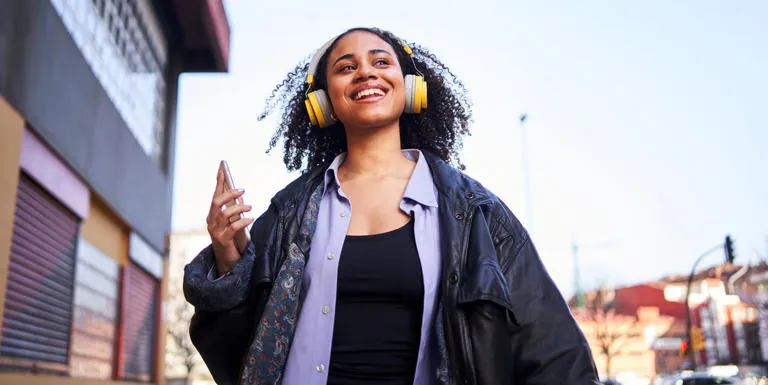With the rapid advancement in technology, noise-cancelling headphones have become a staple in the lives of many individuals. From bustling cities to noisy offices, these devices offer a haven of silence, allowing users to immerse themselves in their favorite music, podcasts, or simply enjoy peace in an otherwise loud world. However, experts have raised concerns about the long-term effects of using these headphones, particularly on the brain and hearing. This article explores the potential risks and the link between noise-cancelling headphones and auditory issues, such as auditory processing disorder (APD).
The Rise of Noise-Cancelling Headphones
The world is becoming louder by the day. From the constant hum of construction sites to the roar of traffic, the noise pollution surrounding us is overwhelming. To combat this, noise-cancelling headphones have become increasingly popular, offering users the ability to block out these external sounds. They work by using microphones to detect incoming sound waves, creating an opposing sound wave to cancel them out. This technology has revolutionized the way people listen to music, work, and commute, offering a level of auditory isolation that was once unattainable.
However, while noise-cancelling headphones provide immediate relief from the noisy environment, experts are now questioning the long-term effects of their use on the brain and hearing. Audiologists have raised concerns about how prolonged exposure to these devices may impair the brain’s ability to process sound efficiently, potentially leading to neurological issues.
How Noise-Cancelling Headphones Affect the Brain
Audiologists have observed a rise in hearing problems among young people, not due to damage to the ear itself, but because of the brain’s difficulty in processing sound. This condition, known as auditory processing disorder (APD), occurs when the brain struggles to distinguish speech or sounds from background noise. Individuals with APD often experience difficulties in social situations, understanding instructions, or following conversations, particularly in noisy environments.
While APD has traditionally been associated with ear infections, childhood brain injury, or genetic factors, there is a growing concern that the use of noise-cancelling headphones may be contributing to the rise in this disorder. The headphones, by blocking out background noise, may prevent the brain from practicing its natural filtering mechanism, which is essential for processing speech and distinguishing relevant sounds from irrelevant ones.
The Link Between Noise-Cancelling Headphones and Auditory Processing Disorder (APD)
The rise in cases of APD among young individuals correlates with the increasing use of noise-cancelling headphones. These devices, while providing immediate comfort, may be hindering the brain’s natural ability to adapt to environmental sounds. According to experts, when individuals use these headphones for extended periods, their brains are not exposed to the full spectrum of sounds, which can affect their ability to process more complex auditory information.
Renee Almeida, a clinical lead in adult audiology at Imperial College Healthcare NHS Trust, explains that there is a distinct difference between hearing and listening. Hearing is a passive process, while listening requires the active engagement of the brain. By constantly listening to selective sounds through noise-cancelling headphones, users may be reducing their brain’s capacity to process and filter other types of sounds effectively. This, in turn, can impair their listening skills, especially in social or professional settings.
Claire Benton, vice president of the British Academy of Audiology, further elaborates on this by stating that noise-cancelling headphones create a “false environment” for the brain, where individuals only listen to what they want to hear. Over time, this can delay the development of high-level listening skills, which are typically completed in late adolescence. The prolonged use of noise-cancelling headphones may, therefore, hinder the brain’s ability to process speech and environmental sounds, delaying cognitive development in young people.
The Science Behind the Brain’s Adaptation to Sound
David McAlpine, academic director of Macquarie University Hearing in Australia, suggests that the rise of noise-cancelling headphones may be inadvertently creating a listening problem by solving a hearing problem. When the brain is deprived of a full range of sounds, it may compensate by “turning up its internal gain,” altering neural pathways that are essential for auditory processing. This overcompensation can change the brain’s natural response to sound, making it more challenging to process auditory information effectively.
The brain has evolved to continuously adapt to the sounds around us, filtering out irrelevant noises while focusing on what’s important. By isolating oneself from the external environment through noise-cancelling headphones, individuals may be depriving their brain of the necessary stimulation to refine this filtering process. As a result, over time, the brain may struggle to adapt to varying soundscapes, leading to difficulties in communication and auditory processing.
The Impact of Noise-Cancelling Headphones on Everyday Life
Beyond the potential risks to auditory processing, there are other concerns regarding the use of noise-cancelling headphones. One significant issue is the lack of awareness of important ambient sounds, such as traffic or public announcements, which could pose safety risks. For example, when commuting or walking in busy areas, wearing noise-cancelling headphones may prevent individuals from hearing oncoming vehicles or emergency alerts, potentially putting them in dangerous situations.
Additionally, prolonged use of noise-cancelling headphones can lead to physical discomfort. Wearing headphones for long periods, especially at high volumes, can create pressure in the ear canal, leading to discomfort, headaches, dizziness, and even hearing fatigue. The physical effects of prolonged headphone use can exacerbate the risk of developing more serious auditory issues, such as tinnitus or permanent hearing damage.
Balancing the Use of Noise-Cancelling Headphones
While noise-cancelling headphones offer undeniable benefits, it is essential for individuals to strike a balance in their use. Audiologists recommend limiting the amount of time spent wearing these headphones, as the brain needs regular exposure to natural, unfiltered sounds in order to maintain its ability to process auditory information effectively. Dr. Ruth Reisman, a clinical audiologist, advises users to limit their use of noise-cancelling headphones to two to three hours per day to prevent overstimulation of the brain and reduce the risk of developing auditory processing issues.
Furthermore, individuals should be mindful of the volume at which they listen to audio through their headphones. According to the World Health Organization (WHO), safe listening environments are those where noise levels do not exceed 80 decibels (dB) over an eight-hour period. Listening to music or audio at excessively high volumes can lead to permanent hearing damage over time, even with noise-cancelling technology.
Noise-cancelling headphones have revolutionized the way we experience sound, providing relief from the constant noise of modern life. However, as their popularity grows, so does the concern about their long-term effects on the brain and hearing. While these devices may help in the short term by blocking out unwanted noise, they may also contribute to auditory processing issues, such as APD, and affect the brain’s ability to process sound effectively. As with all technologies, it is important to use noise-cancelling headphones in moderation, ensuring that the brain remains exposed to a variety of sounds in order to maintain healthy auditory processing skills.
By balancing the use of noise-cancelling headphones and being mindful of their potential effects, individuals can continue to enjoy their benefits while safeguarding their hearing and cognitive health in the long term.










